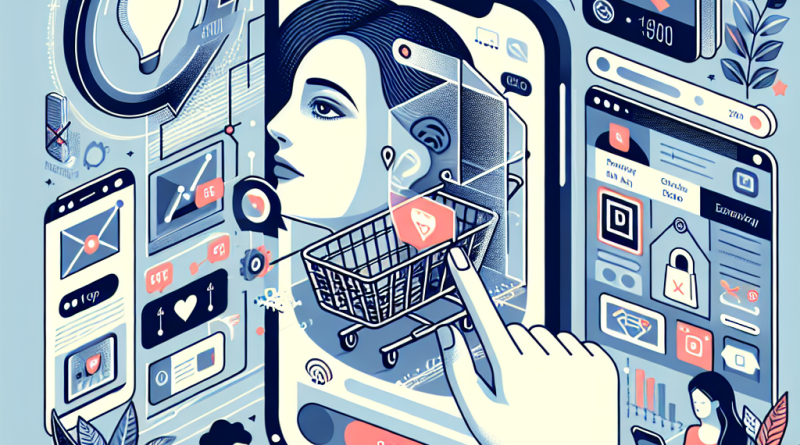How I Turned My iPhone into a Digital Storefront: A Step-by-Step Guide for Aspiring eCommerce Entrepreneurs
Imagine standing on a crowded subway platform, product in hand, snapping an aesthetic photo against the backdrop of graffiti-covered walls. Moments later, that product gets featured on an online store, exposed to thousands of eager buyers. This is not a dream or a marketing gimmick—it’s the future of digital commerce, and it began with nothing more than an iPhone and a vision.
At iphone26.com, we believe in empowering the digital entrepreneur. Whether you’re an artist, a vintage collector, or simply someone with a unique product idea, the iPhone can be your launchpad. And in this walkthrough, I’ll take you through the exact steps I took—from product ideation to first sale—using just my iPhone and a few smart tools. This isn’t just a how-to; it’s a roadmap grounded in real-world execution.
Step 1: Find the Niche That Sparks Obsession
No one builds an empire by being lukewarm. True digital presence stems from passion. For me, it began with handmade leather phone cases. I was obsessed with textures, finishes, and stories behind the craftsmanship—so I turned my curiosity into commerce.
Tip: Use social listening tools like Reddit, TikTok, or Twitter threads right from your iPhone. Search for recurring complaints, desires, or niche obsessions. Once you find a recurring theme—like people frustrated with cheaply made tech accessories—you’ve got your angle.
Step 2: Build a Minimal Prototype—Right from Your iPhone
Once I settled on the idea, I sourced a small batch of premium leather and crafted a few prototypes. Did I run to a studio for photoshoots? No way. I pulled out my trusty iPhone, used some basic iphone camera tips, and shot product photos under natural lighting with portrait mode to give it that rich, professional look.
Tip: Utilize iPhone’s grid feature and always shoot during the golden hour. Combine these with third-party apps like Halide or even Lightroom mobile for color correction. These images will be the foundation of your store and paid ads.
Step 3: Create Your Storefront on the Fly
Most people think you need a desktop to build an online store. I built mine from a beachside café using Shopify’s mobile app. Within hours, I had a homepage, product pages, and even installed plugins—all from my iPhone.
Tip: Incorporate storytelling into your product descriptions. Remember, facts tell, but stories sell. Combine your product specs with your artisan story. Tell them how the leather came from Italy, hand-stitched in your home studio, and every scratch tells a tale of its own.
Step 4: Leverage Social Media as a Conversion Funnel
Instagram and TikTok were my testing grounds. I used high-quality, moody visuals taken with the iPhone and edited clips paired with trending sounds. In one week, I had a reel go viral, bringing in 10k+ profile visits and over 50 sales in two days.
Pro iphone camera tip: Use the iPhone’s slow-motion feature for product unboxings or craftsmanship films. People are mesmerized by detail and movement.
Also important: Always respond to comments quickly. Even if it’s from your iPhone while in line for coffee—engagement equals visibility.
Step 5: Automate Customer Experience From Your Pocket
I didn’t have employees or a CRM tool at first. I used apps like Shopify Inbox, Gmail, and Notes. From warehouse pickup notifications to review requests, I handled it all using automation tools synced to my phone.
Actionable strategy: Set up auto-responders for FAQs like shipping timelines and return policies. Use personalized messaging for first-time buyers—something as simple as, “Thanks for supporting small artisans like me” goes a long way.
Step 6: Turn Sales Into Marketing—User Generated Content
One of my early customers posted a photo of my product on Twitter, tagging our handle. I reposted it, added a thank you IG Story with their image, and this simple action triggered a wave of followers who trusted real people over polished ads.
Next-level growth hack: Offer discounts in exchange for customer photos. Create a branded hashtag. Feature them in emails or on your homepage. The iphone camera tips you used? Share those tips with your customers to help them snap better photos—and get better brand content in return.
Final Notes: Gateways to Scaling
As things grew, I did invest in more complex tools, virtual assistants, and even inventory management systems—but all of it was born from proof of concept built on my iPhone. Today, I can travel light, knowing my store’s heartbeat pumps through a device I carry in my pocket.
That’s the magic. The internet doesn’t care where you began; it only matters what action you take now.
See Customer Success Stories
If you’re still on the fence, see our customer success stories at iphone26.com. From stay-at-home parents to graphic designers, hundreds have turned simple products and simple tools into extraordinary income streams—thanks to the same iphone camera tips and frameworks I followed.
There’s no right moment to start—only action. Pick your product, take out your iPhone, and make the digital world your marketplace.

